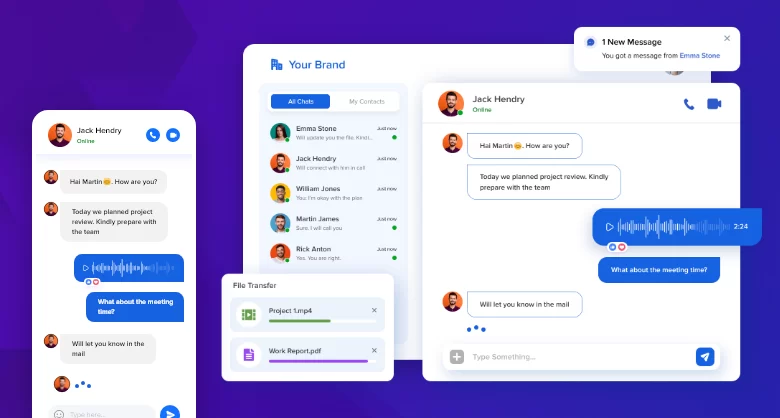The Banking and Financial Service Industry is a process-oriented sector. If you happen to see banking, it is the execution of the same set of activities and processes repeatedly. The repeating process becomes tedious and results in human errors and losses. However, with the advancement of technology, banks, financial & insurance industries are applying the process automation in real-time and leveraging the risks involving high transactions and minimizing the losses.
According to a report by KPMG, in the next 15 years, Robotic Process Automation(RPA) will perform 75% of the existing offshore jobs. Also, the report adds that by 2022 almost 85%of corporate offices will implement RPA expecting 60% to prior implement it.
Table of Contents
How will RPA benefit Banking & Financial Services?
Robotic Process Automation(RPA), allows organizations to automate repetitive tasks and reduce the employee workload and contribute to the growth of the organization.
The Robotic Process Automation in Banks & Finance services
Application of Robotics in the field of banking and finance by primitively using an effective robotic automation process software for end-user support, building AI-significant Workforce and virtual assistance, is how RPA in the banking sector and financial services are implemented.
RPA is a powerful tool addressing the critical need of banking and the RPA use cases in financial services, assisting them in compliance operations with an increase in efficiency and reduction in errors. Further banks and finance institutes implementing RPA are on an exponential increase, with robotic process automation banks can reduce manual efforts, assure better compliance, reduce risks and improvise the overall customer experience.
The RPA market will reach a $2.9 Billion by 2021, sources Forrester reports, the expectations of deploying them in Banking, Financial Service & Insurance is high.
RPA in Banking Process: The most relevant Use Cases
The RPA in Banking Industry involves vast processes. However, considering how the front-end service gets beneficial by RPA leaves us zero down on the following seven most relevant places of RPA in banking use cases are listed below.
1. Essential in Credit Card Processing

In the traditional credit card application, the average waiting period to get the approval of a credit card is about two to four business weeks. This long waiting time usually results in customers getting frustrated and switching to other service providers. Significantly, banks can reduce this by implementing RPA as it processes the application within hours. The AI and Connected systems enable RPA bots to communicate in real-time to the relevant and multiple systems, collect information from across systems, share, scrutinize the application, run a background check in real-time, take decision abiding the strict rules of approving or disapproving the application.
2. Critical processing of Mortgage Loan

In several countries, Banks have a time of minimum one to two month to process mortgage loans. The checklist for approving the mortgage loan is long. However, with RPA in the banking operations the application submission, loan process initiation, application processing, verification of documents, eligibility credit score assessment and allocation of loan is faster, say it can happen in 10-15 minutes. Faster process results in happy customers.
3. Crucial processing of Fraud Detection

Digital banking has its drawback in the form of fraud. Many banks face it difficult in tracking and identification of potential fraud transactions. However, with the benefits of RPA in banking, tracking and flagging the potential fraud transaction with the negligence delay response that too in real-time.
4. Getting to know your Customers- KYC process

The most mandatory process for any banks is to know their valuable customers. The highly data-driven process is the most dependent RPA use case in Banking. As RPA implementation enhances the performance by running all relevant checks on customers and validating on time at a reduced time and cost.
5. Processing Report Automation

Generating reports is an important aspect of the Banking system. Whether it is an account tracking, suspicious activity tracing, or account and loan closures or be claim request, the reports are mandatory. The RPA technology, along with the natural language processing technique, runs several checks over the documents, extracts the information, based on simple predefined codes and produces the report.
6. In the Account Closure Process

Banks get some account closure requests every month, the reason can vary, but the large customer base and multiple reasons also include non-submission of mandatory documents by customers. In such cases, the robotic process automation easily tracks, sends notification, filters and closes the inappropriate accounts saving time and efforts. The benefits of RPA in financial services and banking is countless.
CONTUS’ RPA Service – Automate your Process
Multiple Challenges in Banking and Financial Services are arising due to the need for automation. The biggest digital revolution in Banking and Financial services is happening with RPA tools and AI technology. The tailor-made RPA Solutions for Banking Industry from CONTUS helps you to swift implement, adapt the robotic process automation, saving 20-50% cost, with an increase of efficiency over 40%.
The RPA use cases in BFSI (Banking, Financial Services and Insurances) will assist the processes of repetitive execution of tasks, thereby enabling the BFSI sector to scale-up productivity. When “Process(Banking) meets Process(Robotic Automation)”, it becomes easier to operate with near-zero errors, at 2X faster speed, eliminating effort wastages and saving more.







Leave a Reply